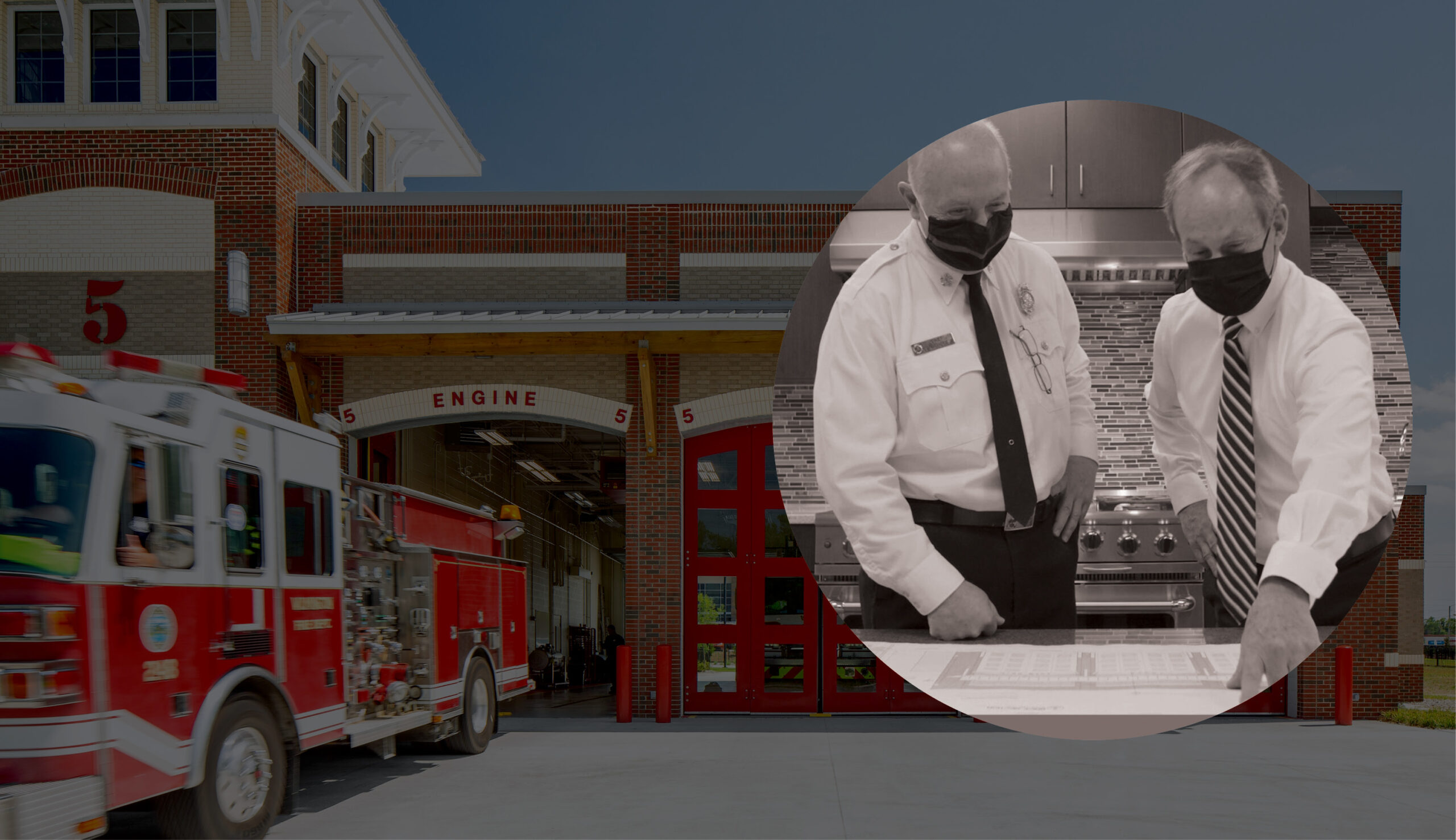Firehouses of the Future are All About Response Time, Community Engagement and First Responder Health

Chief Buddy Martinette of Wilmington, North Carolina had a growing community with rapidly changing requirements. What he needed was a plan to replace five older, inefficient fire stations. After months of study, he came upon a surprising approach. By building three new houses in new locations, his force could better serve the community while saving money, response times, and most importantly, lives.
“Public facilities should be built around community needs. A new fire station is at least a 30-year commitment that requires research as well as presentations to the powers that be,” said Martinette. “Over the years, I have found that we have been most successful (asking for resources) when we can provide the City Manager and Council with a plan that demonstrates that we have a vision for what (the fire company) wants the future to look like. These are huge investments, and it needs to make sense now and in the long term.”
Starting with the first station, Martinette issued an RFP, and architectural and engineering firm Becker Morgan Group responded and won the work on that house. A year later it won the second project.
“My expectation of the design team is that they listen to the people who are actually going to be working there and have consideration for how the building is designed based on their input. That is how you get a great structure built; one we can be proud of. Becker Morgan delivered,” said Martinette.
With each station they undertook a feasibility study followed by a space/needs analysis. These helped to define the problems and challenges the department faced. Then Becker Morgan Group developed the plan with solutions that included firefighting and community response trends, a clear budget and development schedule.
One key, according to Ernie Olds, AIA, the Principal at Becker Morgan heading up Public Safety work, is to identify not only what is needed now, but how the building will be used in the future.
“Positioning of the building to minimize every aspect of response time is critical so that firefighters and EMTs can get to the scene as quickly as possible,” said Olds. “We also have to seek depth of understanding of firefighter health needs, how staff uses the building during downtime, and how the building itself can be a community resource.”
On each project they did months of research, designing buildings that will serve for several decades. Looking at trends in firefighting and EMT response, here are five of the many solutions the design deployed:
Access: Fast-acting bi-parting “barn-style” doors were selected for their visibility and efficiency. “When an overhead door opens, the driver has to wait to be sure it is all the way up because they can’t see them as they pass overhead. Bi-parting doors eliminate guessing and allow for quicker response times, which made them worth the slightly higher costs,” said Martinette.

“Clean” Buildings: The incidence of cancer and other illnesses amongst first responders makes it critical that no carcinogens enter the firehouse after a call. The new firehouse provides transition from the truck bays to a state-of-the-art decontamination area which staff must pass through before they can enter working and living spaces.

Sound: Well-controlled sound is important, both for work and sleep. Taking a cue from Becker Morgan’s hotel design work, the partitions are designed with interior insulation, sound control ceilings and soft floors.

Mental Health: “We think a lot about physical health and training, but for first responders, mental decompression is crucial. Gone are the lonely galley kitchens; eat-in kitchens allow for conversation and meal sharing, two important factors in mental health care because they prevent isolation. Another trend is toward smaller sleeping rooms with one or two bunks instead of 10 or 12, which allows for any gender to have privacy, and for better sleeping conditions. The TV/game room resembles what one might have in a home, which provides greater relaxation between calls with opportunity to bond and talk among colleagues,” shared Olds.

Martinette knew that the Council would be focused not only on development costs, but rightly on maintenance and associated fees. “In addition to building efficiencies, we want to maintain the highest ISO (insurance services office) rating possible, which keeps those costs down for the city and taxpayers.” (The new firehouse earned the highest ISO rating available.)
Olds made sure the building would also be efficient under stress from natural disasters. “When it is as bad out there as possible, such as during a hurricane or seismic event, the building is resilient and durable – a safe refuge for first responders and, if needed, the community.”
Ultimately, the critics who mean the most to Martinette and Olds are those who work in the building.
“The time and effort taken to consider our health, response time and welfare was really impressive,” said Wilmington firefighter “I knew from seeing some of the original designs that it would be nice, but I didn’t know how well-thought out and comfortable it could be. The area we live in is called a ‘house’ but this one really feels like a home.”
Adds Martinette, “Even I was very surprised when it all came together how nice it was; I was almost ashamed to show it to City Council; they might think it too nice! But when the Council came through, they were very proud of all we had built for the money that we had available to spend.”
With the first two projects completed, the team is continuing forward. Becker Morgan has won the work on the third station to complete the set and is currently in the design phase. The firm is also taking what its learned to two fire station projects in Delaware and one in South Carolina, as well as combined police and fire station down the road in North Topsail Beach, NC.
When asked, Martinette reflected on why the approach has been so successful, saying “It came down to how well Becker Morgan listened. We developed a relationship with them where we can talk to them and they are able to speak frankly with us. They are more of a partner than a contractor, and now we have a building that will stand tall for our community for decades.”
